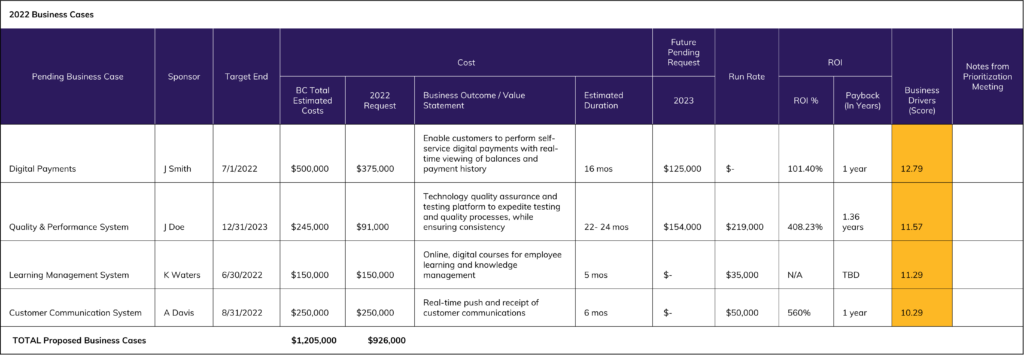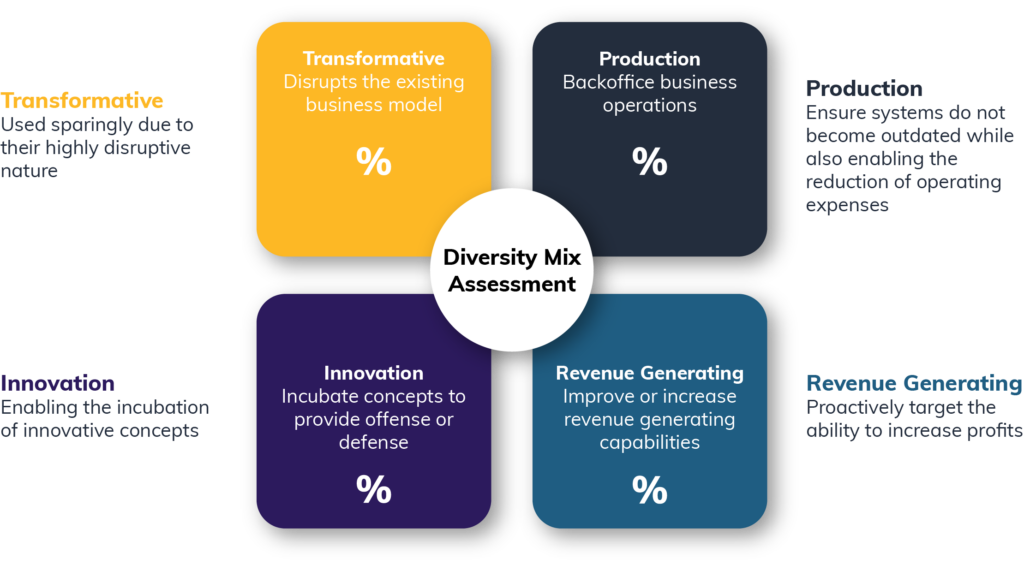Knowing which business cases to select for your project portfolio can be challenging. We walk through how to strategically fund projects based on your company’s needs.
It’s annual planning season again, and while your company is working toward incorporating agility practices across the enterprise, budgeting is still a yearly endeavor.
Executives sequester themselves in conference rooms, either physically or virtually, to discuss strategic goals and how best to divvy out budgetary funds for the upcoming year. Portfolio managers wait to see how much funding they’ll receive to cover all submitted business cases. And business owners are eager to learn if there will be a budget large enough to cover their pet projects.
We all know there is never enough to cover all the projects a company needs. What is a portfolio manager to do? How will you help guide the organization into selecting the right business cases to fund? How do you help apply a mindset focused on delivering value?
Tools for Choosing Business Cases Strategically
You shouldn’t base funding your business cases on a first-come, first-serve concept. You should base selections on understanding how each business case aligns with key business drivers and your company’s overall strategy.
Evaluating business cases is merely one spoke in the portfolio management wheel, but selecting the right business cases to fund is key to achieving your organization’s strategic goals. Here are two tools that can help:
The Business Case Analysis Matrix
When assessing the volume of business cases submitted, there are a series of questions you need to ask to help kick off the evaluation process:
- What strategic goal, business challenge or customer requirement does this address?
- What is the stated value you want to realize as a result of this project? Is the stated value realistic?
- How do the objectives and value align with business drivers (such as regulatory, customer satisfaction, operational efficiencies, and profitable growth)? Is the value clearly stated so others can properly evaluate and score why this business case is relevant?
- How does the business case fit into the overall mix of submitted business cases? Does the mix of business cases create a diversified portfolio?
- What is the cost, and how much do you need to fund from the current budgetary pool? Can you do the funding in phases?
- What resources will you need to support the project or product? Can the existing teams perform the work, or will you need contract resources? If you need contract work, was this incorporated into the proposed cost?
- What is the overall duration of the proposed project or product? Is the stated duration realistic? How does the duration fit within the span of time when considered in relation to the other proposed business cases? How could you sequence them all across an established timeline?
You can use the answers to these questions to assess each business case’s viability and create an analysis matrix depicting an overall illustration of the entire submission of business cases. See the figure below.
Diversity Mix Assessment
The business case analysis matrix is a tool portfolio managers and executives can use as they assess what business cases have been submitted and begin selecting which ones to fund.
Another helpful tool is to assess the overall diversity mix of the submitted business cases (Figure 2). Knowing requesters are proposing the right mix of investments is key to creating a well-balanced, strategically aligned portfolio.
As noted in the figure below, keep in mind each category:
- Transformative: Projects that disrupt the existing business model. Use these sparingly due to their highly disruptive nature.
- Production: Backoffice business operations. These ensure systems do not become outdated while enabling the reduction of operating expenses.
- Innovation: Projects that require incubation but can provide offense or defense depending on the nature of the idea.
- Revenue Generating: Projects that improve or increase revenue-generating capabilities. Proactively target these.
Knowing what percentage of the funded projects or products should be in each category is leadership’s responsibility, based on where they are taking the company strategically. As the Portfolio Manager, you can use this tool to help leadership know what the allocation looks like and perform what-if analyses.
Conclusion
Portfolio management is the bridge between aligning strategic goals to achieving strategically aligned business outcomes. While the number of business cases submitted may look overwhelming, Portfolio Managers who perform quantitative and qualitative analysis along with working with business leaders can help build a portfolio that will deliver value directly linked to selecting the right investments at the right time.



